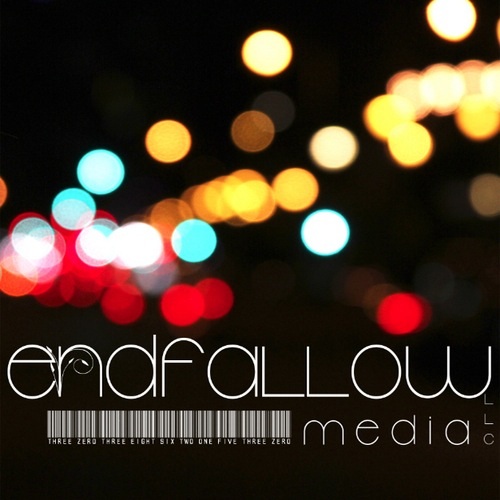
jax_rox
-
Posts
510 -
Joined
-
Last visited
Reputation Activity
-
 jax_rox reacted to The Chris in Why A7Rii is a nogo for landscape
jax_rox reacted to The Chris in Why A7Rii is a nogo for landscape
Making definitive statements about it being useless for anything is complete hyperbole and a gross overreaction. The hot pixels are in every Sony sensor camera. If you take a long exposure with the lens cap on, push the exposure 5 or 6 stops and lift the shadows all the way and then blow up the image 400% there will be noise. Try the same thing with Canon or and m43 and it won't be any better. You can see the same thing on the A7s and D810 here: http://www.fredmiranda.com/forum/topic/1380165/2 and its also in the A7r files.
Capture One easily eliminates all of this with no loss in detail. You can do long exposure noise reduction in cam and it takes a black frame and does the same thing. This does impact people stacking 200 images of star trails as that's not a practical workflow. But for most its a simple fix. Really.
All of these declarations are such overreactions. First its the greatest camera ever! Then it overheats shooting non-stop 4k so its junk! Now there's noise in the shadows its useless! Take a step back, the reality is definitely somewhere in the middle. I've seen some pretty damn impressive landscape images from the A7rII and there will be many more. In no way are any of today's cameras holding you back.
The A7rII certainly has warts, but I've said it before and I'll say it again - its a powerhouse camera that can replace the A7s/A7r and an external recorder for most - except for those that need lots of continuous 4k recording. But it still adds IBIS, 4k internal, better AF, faster startup time, 42mp (18 in crop mode) more adjustments (like minimum SS with auto ISO, assignable record button) and so on...
-
 jax_rox got a reaction from Zach Ashcraft in Why A7Rii is a nogo for landscape
jax_rox got a reaction from Zach Ashcraft in Why A7Rii is a nogo for landscape
I don't feel I'm getting defensive - I just think this forum is quick to jump to the most ridiculous conclusions about products, and completely rule out products based on one, single, unscientific 'test' done by someone who is likely a newbie.
That RED Dragon footage I saw that was insanely noisy, had blown-out highlights, crushed dynamic range, terrible skin tones etc. Instead of saying 'wow, how terrible is the RED Dragon, I'm never going to use it, it's a weak camera with terrible colours, and dynamic range and awful low-light ability' - I watched footage from others and did my own tests and came to the conclusion that you can get really beautiful looking images out of the RED Dragon, and that awful footage I saw was simply user error.
I've seen 5D stills that are awful. I could have said 'man the 5D is just a terrible camera to use for portraits, obviously.' Of course, we all know that to be untrue - the 5D is a great stills camera. I'm not going to judge it based on a small number of people who aren't photographers, or don't know how to use it or expose their photos.
No camera is perfect, and learning more about how they perform in certain situations is always good, and allows you to find strategies to compensate - but let's get some perspective here. And lets do our own tests before jumping to random conclusions. As I've said many times - people here talk at length about how 'awful' the colours from the A7s is. I'm yet to have the same issues. I do have some issues sometimes when skin is under-exposed, but overall I don't get anything like the issues that many seem to have here. By doing my own tests, I've figured out what I can get out of the camera, and how to compensate for other things in order to get great images.
I didn't look at posts from people who were only using the camera for the first time and couldn't expose their images properly to base my decision on purchasing it.
-
 jax_rox got a reaction from Emanuel in Why A7Rii is a nogo for landscape
jax_rox got a reaction from Emanuel in Why A7Rii is a nogo for landscape
I don't feel I'm getting defensive - I just think this forum is quick to jump to the most ridiculous conclusions about products, and completely rule out products based on one, single, unscientific 'test' done by someone who is likely a newbie.
That RED Dragon footage I saw that was insanely noisy, had blown-out highlights, crushed dynamic range, terrible skin tones etc. Instead of saying 'wow, how terrible is the RED Dragon, I'm never going to use it, it's a weak camera with terrible colours, and dynamic range and awful low-light ability' - I watched footage from others and did my own tests and came to the conclusion that you can get really beautiful looking images out of the RED Dragon, and that awful footage I saw was simply user error.
I've seen 5D stills that are awful. I could have said 'man the 5D is just a terrible camera to use for portraits, obviously.' Of course, we all know that to be untrue - the 5D is a great stills camera. I'm not going to judge it based on a small number of people who aren't photographers, or don't know how to use it or expose their photos.
No camera is perfect, and learning more about how they perform in certain situations is always good, and allows you to find strategies to compensate - but let's get some perspective here. And lets do our own tests before jumping to random conclusions. As I've said many times - people here talk at length about how 'awful' the colours from the A7s is. I'm yet to have the same issues. I do have some issues sometimes when skin is under-exposed, but overall I don't get anything like the issues that many seem to have here. By doing my own tests, I've figured out what I can get out of the camera, and how to compensate for other things in order to get great images.
I didn't look at posts from people who were only using the camera for the first time and couldn't expose their images properly to base my decision on purchasing it.
-
 jax_rox got a reaction from sudopera in It looks like "video"
jax_rox got a reaction from sudopera in It looks like "video"
I disagree. Shoot this on IMAX film and it would look similar, especially once you downscaled to put it on YouTube (the grain would be very, very fine). Although, I'd probably go ahead and say the focus wouldn't be as perfect if shot on IMAX film these days (just look at Interstellar)!
IMO, something looking video vs film is partly to do with dynamic range - as film has amazing dynamic range and contains much more information in the highlights than shadows - as evidenced by the fact that it's general practice to over-expose film by up to a full stop. It's also about colours as unlike a bayer pattern sensor that cuts up your sensor into 1/3d blue, 1/3d green, 1/3d red, you're getting full resolution of each colour channel. In addition, the 'noise' (or grain) is not colourful, and much less distracting.
They're perhaps minor things, but it adds up to a 'noticeable' difference, even if you can't necessarily put your finger on what that difference is.
I also think a lot of the time people confuse lack of production value with looking video. If I pull out an Alexa, whack a cheap lens on it, set the exposure somewhere that looks okay, frame up some average looking shot on an average looking day and then only put a REC709 LUT on it and upload to YouTube or whatever, it might even look nice but I bet you wouldn't pick Alexa if I asked you what I shot it on. It would still look somewhat 'video-ey'.
If I light my scene, after testing the Alexa for what I think is acceptable usable DR, test ISO settings to get me the exact result I want - light creatively, get a professional Production Designer in to dress the set appropriately, get a costume designer in to design the costumes, beg the rental company for a good deal on nice lenses, and then send it off to be professionally sound designed and mixed, suddenly my film is looking a lot more like 'film' than 'video'.
But the motion cadences, highlight fall off, etc etc. was all developed to be that way because of the way that film handled such things, and how we were used to it. If film had never existed, digital would probably have never even attempted 24p - in fact, we'd probably be very used to watching things at 48fps with that motion cadence (like The Hobbit tried). If we never had film as a benchmark - if film never existed, would we have put time and effort into developing large sensor cameras? We may never have had experienced shallow depth of field in the same way, or had large dynamic range to view on screen. So is there a particular reason that we would ever have developed past 1/3 or 2/3" 3-chip arrays - especially as a 3-chip prism produces better colour than a single bayer pattern sensor (you have one chip for each colour, versus one sensor sliced up in a way that eventually makes 1/3rd of the sensor for each colour). We may never have seen wider dynamic range as pertinent, or important to video cameras.
Indeed, the whole idea of a 'cinematic' look is one that involves being captured on celluloid film. This idea we have of what 'cinematic' looks like is developed from what film looks like on screen.
So by definition, having a cinematic look, in the way you describe it, is to look as much like film as possible - of course in addition to the production design, costume design, sound design, direction etc. etc.
-
 jax_rox got a reaction from sunyata in De-mystifing Log and other things
jax_rox got a reaction from sunyata in De-mystifing Log and other things
Looks, picture profiles, LUTs and Log.
For those who were recently talking about understanding log and how it works etc. Here's a pretty good article from newsshooter that breaks it down
http://www.newsshooter.com/2015/07/27/looks-picture-profiles-luts-and-log-why-when-and-how-you-should-use-them/
-
 jax_rox got a reaction from Greg Padgett in De-mystifing Log and other things
jax_rox got a reaction from Greg Padgett in De-mystifing Log and other things
Looks, picture profiles, LUTs and Log.
For those who were recently talking about understanding log and how it works etc. Here's a pretty good article from newsshooter that breaks it down
http://www.newsshooter.com/2015/07/27/looks-picture-profiles-luts-and-log-why-when-and-how-you-should-use-them/
-
 jax_rox got a reaction from dahlfors in Canon's new $30,000 video camera does only 1080p
jax_rox got a reaction from dahlfors in Canon's new $30,000 video camera does only 1080p
Exactly - the Phantom Miro is what - $45k? it only records 1080p, has a limited dynamic range compared to any other camera at that price point, is rated at 640 ISO, ideally needs a data umbilical to a computer to function properly, can only record 3 seconds at a time at max fps, and that must be triggered 'after the fact'... and that still seems to have found a market - so I imagine this will too.
-
 jax_rox reacted to Leica50mm in Canon's new $30,000 video camera does only 1080p
jax_rox reacted to Leica50mm in Canon's new $30,000 video camera does only 1080p
Wow ! Canon just copied Red's EF mount .
-
 jax_rox got a reaction from TheRenaissanceMan in Fun story A7R / 5D III
jax_rox got a reaction from TheRenaissanceMan in Fun story A7R / 5D III
Custom sensor design is very finnicky. The image is affected even by how each element is wired to each other. There's a lot that goes into it, and that's why the Alexa costs the price it does.
Sony are pretty responsive in regards to their camera divison - the big difference being that their professional camera division adds features into the already existing cameras, the consumer division simply brings out a new body. Sony will fix the issues you have with your consumer camera - but you'll need to buy a new body to get them. That's been the way even as far back as the NEX series.
In my opinion, if you've worked at all with the F5/55, FS7 or F3, you won't be 'shocked' by the colours in the A7s. They're not wildly different (to any camera for that matter), so if you think the F5 has great colour, and the A7s has terrible colour, I can only gather that it's purely operator error... The A7s is slightly different looking, but it's pretty similar - and definitely has that 'Sony' colour. The F5 and the C300 look very different - if you want to compare Sony vs Canon colour, try the difference between those (both can, and do, look great though)
The only time I've had issues on my A7s with colours is if the white balance is wrong (which is going to give you funky colours on any non-raw camera anyway, and is pretty easy to fix), or if skin is under-exposed it can struggle to hold up to extreme grading because of the 8-bit codec.
-
 jax_rox got a reaction from IronFilm in The Effect Of Owning A Very Expensive Camera (for business)
jax_rox got a reaction from IronFilm in The Effect Of Owning A Very Expensive Camera (for business)
It depends on the 'client' you're talking. Producers hire Cinematographers based on talent, knowing full well they're going to have to hire a camera system. This is usually budgeted for. If the Cinematographer in question happens to own their own camera that the production can use, in this case it's generally used as a win-win for the production and the DP - the production pays a discounted rate for camera hire, and the DP gets more money as a camera hire rate. At this level, the DP is rarely chosen simply because of the gear he owns (and I have many friends who were making good money before buying cameras - they realised that 9 times out of 10 they were hiring Alexas for jobs, so they decided to buy one and take the camera hire rate themselves).
On lower budget productions, having a decent camera can sometimes help to secure work. However, in this case, clients are generally looking for someone with a full package - usually camera, lights, lenses.
A friend of mine is a Gaffer who works on high budget films, but also owns a RED, and tries to shoot low budget stuff (decently paid), and his gear always gets a hammering on the low budget stuff as you just can't afford the crew you regularly work with, and the general wear and tear that happens on every shoot is less likely to be compensated for than on something that has a bigger budget. He shoots quite nice looking stuff, but a DP he works (who also worked their way through as a Gaffer) said to him 'if you really want to work as a DP - sell all your gear'
-
 jax_rox got a reaction from sanveer in Why Canon is Still Top Dog
jax_rox got a reaction from sanveer in Why Canon is Still Top Dog
XAVC is a Sony development, and so there wouldn't be a Panasonic with XAVC implementation. If anything, you're more likely to see some flavour of AVC-Intra (which I believe is something they should do - along with a log picture profile; even if it's in a more expensive body than the GH4).
Panasonic's problem is they're kinda flailing. They were way too late to the party with their large sensor cinema camera - Varicam and the Sony F900 were the digital cameras of choice, particularly for episodic television (or any production that was shooting digital and couldn't afford a Viper, Genesis or D21). Then RED came along and changed the game. Sony were able to push cameras like the F35, capitalising on technology that already existed in the F900/F950 (and assumedly what they learned in collaboration with Panavision). Then they brought out the F65 and discontinued the F35. The F65 didn't really catch on as most people had already decided on RED or Alexa (which Arri capitalised on their technology in the D21), both of which were smaller, lighter and easier to use with a similar (or better, depending on who you ask) image.
Sony then brought out the F3 and then eventually the F5/55, which now has found a market, despite strong initial competition from Canon.
Panasonic, meanwhile, during the time of change, has been almost nowhere to be seen. They brought out the Af100, which was a step in the right direction, but was not really even a competitor to the F3 - now it's discontinued and finally after many years of speculation and waiting, they've come out with their digital Varicam. Is it a great camera? Yes. Will it catch on? Who knows. Does it offer that much over REDs, Alexas, etc. to really help it catch on? That remains to be seen. I'm not really sure that Panasonic really know how they're structuring their camera line. At least, they don't have the structure that Sony, or even Canon do. They had such an opportunity, with the DVX100 and HVX100 that were so, so popular - and the Varicam at the top end of town and they seem to have just sat on their hands and let other companies take over their position in the market.
Pansonic make good cameras, I hope they can get back into the dominating position they were in in the DVX100 times.
I'm yet to hear of the A7 line overheating, but even Canon DSLRs overheat in video mode (and much moreso than the current crop of competitor DSLMs).
Sony's prices are pretty competitive, IMO. The A7rII is the first camera body to come even close to the price of a 5DmkIII, and it's paper specs absolutely smash it out of the park (of course we know paper specs aren't everything). They're more expensive than Panasonic, but I'm not really sure they see Panasonic as a competitor, at least not in their full frame line. IMO, the m4/3 line will always be a stalwart of consumers and prosumers, as well as video shooters (simply because the video features they provide you with). Most photographers are going to be drawn to at least APS-C, if not full frame. I couldn't care less, but there are many photographers (and video shooters) who think full frame is the only thing worth shooting.
I agree about more lenses. I don't think their agreement with Zeiss will be a hindrance - there are many SOny-only branded lenses, and for their other mounts (even APS-C E mount) there is relatively affordable decent glass available.
I personally think both Sony and Panasonic need to re-think the way they market their cameras. Sony do it a little better than Panasonic, but I'm not sure that the Japanese doco-style shoots as their launch videos for new cameras are really the best way to do it. Even the F5/55 launch had some pretty terrible launch demo videos. They need to send some freebies to some decent DPs and get some really ncie footage happening.
Maybe Panasonic and/or Sony should hire a really great crew and shoot some beautiful short films? Imagine a beautiful looking 3 minute short film online, or before a film festival screening for example. You look at it and think 'wow this is beautiful'. You get caught up in it, and then right at the end it comes up with 'shot on Sony A7s'.
Much more effective than tests or Japanese garden videos IMO.
-
 jax_rox got a reaction from TheRenaissanceMan in Fun story A7R / 5D III
jax_rox got a reaction from TheRenaissanceMan in Fun story A7R / 5D III
If I was only shooting stills, then I would use a Canon if only for the little things like autofocus, lens availability etc. etc.
For video though, why would you go with a Canon DSLR??
Perhaps I have the virtue of coming here to learn more about the A7s, but I've shot with a lot of cameras - not just Canons and in my personal opinion the Canon colours are incredibly over-rated on here. Nowhere else, either when I'm out working, or on the internet, is there such a cry of 'oh man the Canon has the best colours in the world'.
Maybe it's because a lot of people here have used Canon for a long time, or in some cases, only ever used Canon and so are simply used to the image and colour you get out of it. I'm sure if the A7s was the 5DmkII of its time, people wouldn't have complained about the supposedly 'strange colours' (which I'm personally still yet to replicate on my A7s).
You can get nice colours out of almost any camera - the point of colour grading is to get colours you like. Personally, for day-to-day usage (i.e. not studio use), I'm looking for a camera that's light, easy to use and gives me a great picture. I've used 5Ds, 7Ds, and Rebels and not once was I happy with the picture straight out of the camera (and even after grading etc. it still looked meh). Now, you can say 'well you get great results if you shoot flat, reduce contrast, reduce sharpening, or use ML raw' - and that's true. But I can also get great results (if not better) by doing the same with my A7s. Except all I have to do with my A7s is turn it to Picture Profile 7.
I continue to be amazed at the quality of the imagery I get out of my A7s, especially paired with the Shogun. I don't want a camera that's going to work against me, or that I have to hack to oblivion to get a half-decent image out of it. The 5D3 raw is nice, but it's not 'mind-blowing' as half the users here would have you think.
I've had friends tell me they prefer the RED image to Alexa because Alexa is 'way too green' (at least it was until I pulled the green ND filter out of the matte box). In this day and age of colour correcting and grading every shot, colours start to matter less and less. Yes, they matter - but one person's dislikes an Alexa because it's too green, another dislikes RED because it gets really red noise in shadow areas from time to time, another dislikes the F55 because it can be over-saturated (or whatever). Do colourists say 'man you should have shot this on a Canon because the colours are oh so much better?' No. They correct the green out of the Alexa that the person operating forgot to take the ND off, they correct the red out of the RED that the operator under-exposed accidentally (which is why there was noise there in the first place), and they correct the saturation out of the F55 that was there because the operator didn't check the saturation setting when they picked up the camera, and the previous shooter had bumped it up.
Imagine the outcry on here of 'it must have been operator error' if I said I'd seen some terrible colours out of a Canon! But you use a Sony and suddenly it's Sony's fault!
In regards to the OP, if the only thing the Canon 1Dc can offer over the A7s is marginally better colours to those who have spent most of their time shooting Canon anyway - and it still costs more than 3x that of the A7s, then Canon have got real problems.
-
 jax_rox got a reaction from Amro Othman in The Next Big Indie Filmmaking Idea on Kickstarter: Lume Cube
jax_rox got a reaction from Amro Othman in The Next Big Indie Filmmaking Idea on Kickstarter: Lume Cube
You mean like DMX...?
I'd like to know what their light output is/some photometrics. I don't mind the idea of 'modular' lighting, but I can't see myself using these. Potentially not enough output, too small (so inherently hard) - I could see myself ganging a few together and putting diffusion over them, but then it defeats the purpose.
There'll be some obscure cases, but I don't think it's the second coming of lighting equipment.
-
 jax_rox got a reaction from Amro Othman in Why Canon is Still Top Dog
jax_rox got a reaction from Amro Othman in Why Canon is Still Top Dog
I know the C300 found its market, but it's not quite correct to state that most cinematographers use the C300...
I often wonder if Canon and Arri (and RED to some extent - at least in creating hype) are the only companies who really know how to market a camera.
Sony tried their darndest with the F5/55 and it ended up with little short films that had clipped highlights, an average grade and squashed dynamic range - not at all reflective of how either camera actually handles. Panasonic's Varicam reel was nice looking, but I haven't seen or heard anything since. The latest demo shoots from Sony (for FS7, A7rII etc) are average, and do little to really show off the cameras abilities.
Even the official A7s demo footage I saw was so-so. Why weren't Sony the first ones to go 'let's shoot a short film at 2am using moonlight as our only light source to show this camera off'? Why not send out some pre-production models to some big productions and see how they put them to use? Sure, the Canon 5DmkII revolution kinda grew organically, but times have changed!
-
 jax_rox got a reaction from jbCinC_12 in The Canon fight back begins - with a box
jax_rox got a reaction from jbCinC_12 in The Canon fight back begins - with a box
Eh - I mean, who really cares? There are people who own RED cameras who have no clue how to expose an image, let alone light an interesting scene. There are people who started shooting on Super 8mm, or Hi-8 video who are now making quite good movies (even Hollywood ones!)
Whether or not someone is taken in by the marketing ploy or not - does it really matter? Sure none of the Canon cameras can really compete on a price vs spec level. But does that mean you can't get a great image out of them? I've seen 7D and 5D stuff blown up onto the big screen and intercut with Alexa footage. Does that mean my A7s couldn't give a better image than both of those cameras? Of course it can. So what? I like the way the A7s works, and I like the image I can get out of it. I love that I can use it as a B-cam for an F5, or Alexa or whatever. I prefer the ergonomics, the usability and the image to the Blackmagic pocket (and honestly, even the Blackmagic Cinema Cam). Many would think me stupid for having such an opinion ('haven't you seen the colours from the A7s?!!) and yet there are plenty professional filmmakers (even Hollywood filmmakers) using the camera day-to-day and producing beautiful images.
Yep - the lines of cameras they are trying to push are outdated, and outspecced by any of the current DSLMs. Doesn't mean one can't get a decent image out of it - and it doesn't mean you can't tell a good story with it. Look at Tangerine. While everyone here was busy arguing over which camera had the better dynamic range, or colour rendition, a bunch of filmmakers went out and shot a film on an iPhone, told a great story and got into Sundance, and is now opening in cinemas across the world.
And you laugh at someone who buys a 70D...
Maybe Canon are having their Kodak moment - though Kodak never had cinema cameras to bolster their line up... Pretty much every camera company uses this kind of marketing to push their cameras. You can laugh at the fact that their cameras are overpriced, but can you blame them for trying to push their product (which may or may not be declining in sales) as much as they possibly can?
-
 jax_rox got a reaction from terozzz in New A7Rii Footage
jax_rox got a reaction from terozzz in New A7Rii Footage
100% fake. It doesn't even look like Sony footage (not to mention why would you mke a big deal of '4k video' and then only upload 720p footage to YouTube).
-
 jax_rox got a reaction from Oliver Daniel in How does buying a new camera affect you creatively?
jax_rox got a reaction from Oliver Daniel in How does buying a new camera affect you creatively?
This isn't the same or even a similar argument. Kubrick used super fast lenses to deliver on a creative idea on how he wanted to stage the scene. The question is more like:
Kubrick - 'If I shoot Fuji stock over Kodak, will anything change?'
Forum user - 'Do tests man, but remember that in the grand scheme of things, which stock you use isn't the biggest concern'
Kubrick - 'Alright, well at least I know if they don't have enough Fuji stock for my film, I can use some Kodak stock and it won't matter so much'
In fact the debate/chat these days is more like this:
Filmmaker: 'If I use Kodak Vision2 stock instead of Vision3, am I going to be missing anything..?'
Forum user 1: 'Man, Vision2 is so old now, you can't even get grain structure anywhere near that of Vision3. I made the switch to Vision3 not long ago and I would never go back to Vision2'
Forum user 2: 'I don't like the colors in Vision3, they're so different to Vision2. I know Vision3 supposedly gives you more dynamic range and better grain structure, but I like the colors so much better in Vision2. I know some people can work with Vision3, but I think for the majority of people, Vision3 is way too hard to get good colors out of'
Forum user 3: What happened to Fuji? I used to shoot Fuji stock all the time, but they haven't brought out a stock I've liked in so long. I'm using Vision3, but would happily jump back to Fuji stock if they ever came out with anything I was interested in using.
Forum user 4: 'I don't understand the fuss - all the stocks mentioned give you great images - just go out and shoot on what's easiest and cheapest for you to afford. No-one in the cinema is going to be nitpicking whether or not you used Vision2 or Vision3. Yes, there are differences between them, but in the grand scheme of things, it's not that big a deal
Filmmaker: 'I'm so confused'
-
 jax_rox got a reaction from TheRenaissanceMan in How does buying a new camera affect you creatively?
jax_rox got a reaction from TheRenaissanceMan in How does buying a new camera affect you creatively?
This isn't the same or even a similar argument. Kubrick used super fast lenses to deliver on a creative idea on how he wanted to stage the scene. The question is more like:
Kubrick - 'If I shoot Fuji stock over Kodak, will anything change?'
Forum user - 'Do tests man, but remember that in the grand scheme of things, which stock you use isn't the biggest concern'
Kubrick - 'Alright, well at least I know if they don't have enough Fuji stock for my film, I can use some Kodak stock and it won't matter so much'
In fact the debate/chat these days is more like this:
Filmmaker: 'If I use Kodak Vision2 stock instead of Vision3, am I going to be missing anything..?'
Forum user 1: 'Man, Vision2 is so old now, you can't even get grain structure anywhere near that of Vision3. I made the switch to Vision3 not long ago and I would never go back to Vision2'
Forum user 2: 'I don't like the colors in Vision3, they're so different to Vision2. I know Vision3 supposedly gives you more dynamic range and better grain structure, but I like the colors so much better in Vision2. I know some people can work with Vision3, but I think for the majority of people, Vision3 is way too hard to get good colors out of'
Forum user 3: What happened to Fuji? I used to shoot Fuji stock all the time, but they haven't brought out a stock I've liked in so long. I'm using Vision3, but would happily jump back to Fuji stock if they ever came out with anything I was interested in using.
Forum user 4: 'I don't understand the fuss - all the stocks mentioned give you great images - just go out and shoot on what's easiest and cheapest for you to afford. No-one in the cinema is going to be nitpicking whether or not you used Vision2 or Vision3. Yes, there are differences between them, but in the grand scheme of things, it's not that big a deal
Filmmaker: 'I'm so confused'
-
 jax_rox got a reaction from Ed_David in VR – the future of storytelling? Or is it radio the future of storytelling?
jax_rox got a reaction from Ed_David in VR – the future of storytelling? Or is it radio the future of storytelling?
I wouldn't be surprised if the future of VR is a cross between a CGI movie experience and a video gaming experience, perhaps in addition to pure CGI movies, and video games (in addition to video games for VR headsets).
-
 jax_rox got a reaction from sanveer in New Shure Mics but with a rider
jax_rox got a reaction from sanveer in New Shure Mics but with a rider
As far as I can tell, there's only one out of the whole range that is limited to iOS device only - and that is purely because it connects via a Lightning adapter built into the microphone itself.
All the others can be used on pretty much any device.
I'm not really sure how useful they are for real filmmaking though. The lavaliers might be cheaper than traditionally expensive wireless lavs - but the phone preamps are rarely going to be any good.
-
 jax_rox got a reaction from Jonesy Jones in Sony strategy: good news
jax_rox got a reaction from Jonesy Jones in Sony strategy: good news
With Sony, you can't really base ideas of how any of their cameras work on one camera in particular. THe menu systems are sometimes drastically different between cameras, and the images you can get - with/without ease can be quite different. IMO, the A7s gives a much better image out of the box than the unsharp, muddiness you get out of the FS700. I was utterly horrified when I saw stuff I saw that I'd shot on the FS700 projected on a big screen. If nothing else, the A7s is miles sharper. You can now get quite decent images out of the FS700, but it can take a bit of work.
IMO, the A7s is quite different, and has a pretty different gamma curve, and even slightly different colours. To me, that A7s looks much more like what you get out of an F3 - and the external Slog2 looks very much like what you get out of an F3 in Slog2 (albeit on the F3 you can get 10-bit output in Slog2).
Personally, I find I tended to dislike the colours out of my Canon. The A7s certainly has a look about it, but I wouldn't go as far as saying it's bad, or has bad colour. You can get bad colour out of an Alexa if you only have a minimal idea of what you're doing (as I said up above). I've seen noisy, ugly, unsharp, muddy, green looking footage straight out of a RED Epic, which by all means shouldn't be too hard to at least get a decently exposed, nice looking image (I mean, all you really need to do is look at the Histogram).
I find Canon colours to generally be way too warm. The skin tones end up almost orange, rather than a nice pinky-red colour. I've found the colours out of my A7s tend to be a little bit more 'true to life' than the Canons which can look like you've put a warming filter over the lens.
I've done a lot of shooting with the A7s and I find it relatively easy to get quite a nice look and colours. I've never seen green skin tones on my footage. I have seen people using green tinted ND filters.
-

-
 jax_rox got a reaction from Chris Santucci in Lenses should have megapixel ratings
jax_rox got a reaction from Chris Santucci in Lenses should have megapixel ratings
I'm going to go ahead and say that the average consumer actually doesn't really care. They buy based on numbers because in their mind higher megapixel = better. They have no understanding of why, or how - but that's the thought process.
If you showed an average consumer a picture taken with a $100 kit lens, next to the same picture taken on the same body at the same focal length with a $1200 lens - they may or may not see much difference.
But they're unlikely to go out and spend an extra $1100 on a lens. Most consumers are baffled when you tell them a single lens can cost $100,000.
Professionals buy expensive lenses because they appreciate and understand the very reason they're expensive. Professionals (and even enthusiasts, I guess) care about the quality of all the components, because they know the difference it makes to the picture.
Consumers don't get it. Realistically, someone who's just picked up a camera is unlikely to take amazing photos even if they have a $1200 lens on it.
-
 jax_rox got a reaction from Brian W. Allan in Lenses should have megapixel ratings
jax_rox got a reaction from Brian W. Allan in Lenses should have megapixel ratings
I'm going to go ahead and say that the average consumer actually doesn't really care. They buy based on numbers because in their mind higher megapixel = better. They have no understanding of why, or how - but that's the thought process.
If you showed an average consumer a picture taken with a $100 kit lens, next to the same picture taken on the same body at the same focal length with a $1200 lens - they may or may not see much difference.
But they're unlikely to go out and spend an extra $1100 on a lens. Most consumers are baffled when you tell them a single lens can cost $100,000.
Professionals buy expensive lenses because they appreciate and understand the very reason they're expensive. Professionals (and even enthusiasts, I guess) care about the quality of all the components, because they know the difference it makes to the picture.
Consumers don't get it. Realistically, someone who's just picked up a camera is unlikely to take amazing photos even if they have a $1200 lens on it.
-
 jax_rox got a reaction from estarkey7 in Lenses should have megapixel ratings
jax_rox got a reaction from estarkey7 in Lenses should have megapixel ratings
I'm going to go ahead and say that the average consumer actually doesn't really care. They buy based on numbers because in their mind higher megapixel = better. They have no understanding of why, or how - but that's the thought process.
If you showed an average consumer a picture taken with a $100 kit lens, next to the same picture taken on the same body at the same focal length with a $1200 lens - they may or may not see much difference.
But they're unlikely to go out and spend an extra $1100 on a lens. Most consumers are baffled when you tell them a single lens can cost $100,000.
Professionals buy expensive lenses because they appreciate and understand the very reason they're expensive. Professionals (and even enthusiasts, I guess) care about the quality of all the components, because they know the difference it makes to the picture.
Consumers don't get it. Realistically, someone who's just picked up a camera is unlikely to take amazing photos even if they have a $1200 lens on it.














